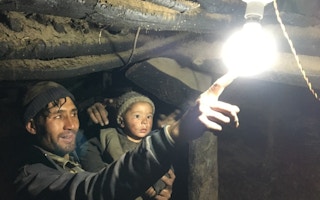A youth population boom in Sub-Saharan Africa and South Asia is creating a huge challenge to governments: how to employ them all.
For example, according to the World Bank, India has to find 8 million new jobs each year to keep employment rates constant. Moreover, low employment rates in South Asia are mostly due to women working less than in other regions.
Amid growing concern in country capitals and regional institutions over the potential for social disruption and increased migration, new data released today to mark World Youth Skills Day suggests that rural electrification can be one important contributor to alleviating joblessness, especially for youth and women.
Indications also emerged that providing access to energy can help scale agriculture, which is seen as crucial to future growth of still largely agrarian economies.
The data— contained in the Powering Jobs Census 2019: The Energy Access Workforce, gathered by several research partners and authored by NGO Power for All—revealed that decentralised renewable energy (DRE) solutions, including mini-grids, solar for households and businesses, and systems to power machinery such as irrigation pumps and other appliances, already employ as many people as the traditional utility power sector in the three countries surveyed, India, Kenya and Nigeria
In Kenya, decentralised renewable energy companies directly employ 10,000 formal workers, and that number is expected to grow 70 per cent by 2022-23. In comparison, the state utility, KPLC, employs 11,000 today. In Nigeria, direct employment by the sector is expected to boom more than 10-fold by 2022-23 to 52,000 jobs, which would far outstrip the 10,000 currently employed by the gas, electricity and steam sectors.
The census found that these DRE jobs were highly skilled and fall within the middle-income range for their respective countries. More than two-thirds of jobs are full-time and long-term, as compared to the wind power sector in India, where 81 per cent are one-time jobs.
“
In Kenya, decentralised renewable energy companies directly employ 10,000 formal workers, and that number is expected to grow 70 per cent by 2022-23.
In a world increasingly dominated by informal work, the sector is also performing well, according to the census, creating double the number of informal jobs compared to formal jobs. It also revealed that the sector is a real opportunity for absorbing unemployed rural youth. Overall, 40 per cent of jobs are being filled by youth.
Women, on the other hand, account for just one-fourth of jobs, lower than the global renewable energy sector, suggesting that there is significant untapped potential to achieve better gender balance.
Nigeria gives a glimpse of what’s possible, where women account for 52 per cent of formal workers in companies selling household solar systems and other small off-grid appliances, and 44 percent of the informal workers.
But perhaps most intriguing is that gaining access to electricity from mini-grids and solar for home and business appears to be creating about 5 times as many non-energy sector jobs than the direct, formal jobs created by the energy companies themselves.
Put another way, access to electricity is generating broader economic activity in rural communities, in particular because of its ability to power appliances used in agricultural production such as irrigation pumps. In India, the census found 95,000 direct, formal jobs, but 470,000 productive use jobs.

“The development world often lives in ‘solution silos’, with little collaboration between different sectors,” says Rebekah Shirley, Power for All’s Chief Research Officer and co-author of the census report. “It’s clear from the census data that there is a linkage between energy access, labor and agriculture.
More research is needed, but if ending poverty and improving livelihoods are the ultimate goal, we would be unwise to ignore decentralised renewable energy as an important catalyst.”
Previous estimates suggested that the entire off-grid renewable energy value chain can employ 4.5 million people by 2030, and up to 1.3 million full-time equivalent jobs in the off-grid solar sector, not including mini-grids, by 2022.
But the new census is the first real comprehensive measure of the whole industry at a country level. Power for All plans to expand the census to 25 countries by 2021, while expanding the survey to also include clean cooking.
Perhaps most telling are recently published findings that amid a surge in the number of global renewable energy jobs (11 million people), only 2 per cent of those jobs are in Sub-Saharan Africa (excluding South Africa). But for Africa to make up ground, a jobs-ready workforce is needed, and the census reported serious gaps in talent, especially at the management level.
William Brent is a director of the Power for All campaign. This story was published with permission from Thomson Reuters Foundation, the charitable arm of Thomson Reuters, that covers humanitarian news, climate change, women’s and LGBT+ rights, human trafficking, and property rights. Visit www.trust.org


















